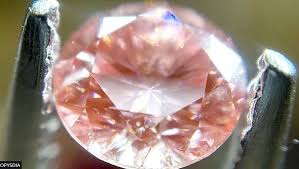Diamonds are widely recognized as one of the most precious and sought-after gemstones in the world. They have a rich history, with their use dating back thousands of years. In ancient times, diamonds held great significance in various cultures, including India, where they were utilized for engraving gemstones as early as 300 BCE. This article delves into the reasons behind the use of diamonds for engraving in ancient India and explores how lab made diamonds have continued this tradition in modern times.
India, renowned for its exquisite craftsmanship and rich cultural heritage, has a long-standing tradition of using diamonds for intricate engravings on gemstones. During the period of 300 BCE, Indian artisans developed sophisticated techniques to carve intricate designs on various materials, including gemstones. Diamonds, with their exceptional hardness and durability, became the preferred tools for this delicate art form.
The choice to use diamonds for engraving gemstones in ancient India was primarily driven by the remarkable properties of these precious stones. Diamonds are the hardest naturally occurring substance on Earth, scoring a perfect 10 on the Mohs scale of mineral hardness. This exceptional hardness made them ideal for carving and engraving intricate patterns with precision and detail. The use of diamonds as engraving tools allowed artisans to create exquisite designs that would withstand the test of time.
Furthermore, diamonds possess exceptional refractive properties, enabling them to reflect and refract light in a way that enhances the beauty and brilliance of the gemstones being engraved. This characteristic added a mesmerizing allure to the engravings, captivating the beholder with their captivating sparkle and radiance.
In ancient India, diamond engraving was not limited to gemstones alone. Diamonds were also used to engrave other materials such as metal, wood, and even ivory. The skill and artistry of Indian craftsmen were highly regarded, and their intricate engravings became treasured works of art.
Fast forward to the modern era, where lab-made diamonds have emerged as a sustainable and ethical alternative to naturally mined diamonds. These lab-created diamonds possess the same
chemical and physical properties as natural diamonds, making them an excellent choice for diamond engraving. Lab-made diamonds are created in controlled laboratory environments, replicating the conditions under which diamonds form in nature.
The use of lab-made diamonds for engraving gemstones carries forward the legacy of ancient Indian craftsmanship. These man-made diamonds provide an opportunity to preserve the art of intricate engraving while ensuring ethical sourcing and environmental sustainability. Lab-made diamonds offer exceptional hardness and clarity, allowing artisans to carve precise and intricate designs on gemstones with ease.
Furthermore, lab-made diamonds provide greater accessibility to individuals who appreciate the beauty and symbolism of engraved gemstones. The availability of lab-made diamonds in various sizes, shapes, and colors allows artisans to explore their creativity and cater to a wider range of preferences and budgets.
In conclusion, the use of diamonds for engraving gemstones in ancient India by 300 BCE stemmed from the exceptional hardness, refractive properties, and enduring beauty of these precious stones. The tradition of diamond engraving in India showcases the skill, craftsmanship, and appreciation for intricate artistry. Today, lab-made diamonds continue to carry forward this tradition, enabling artisans to create mesmerizing engravings on gemstones while ensuring ethical sourcing and environmental sustainability. The legacy of diamond engraving serves as a testament to the enduring allure and timeless beauty of these remarkable gemstones.









































